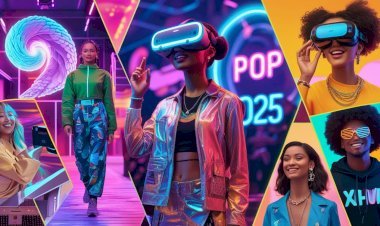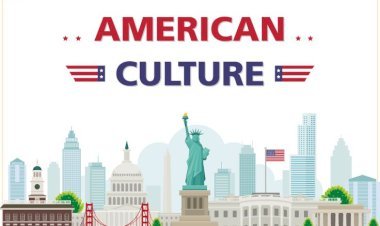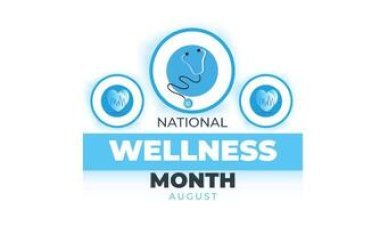Contemporary American Culture in 2025: Trends, Diversity, & Pop-Cultural Shifts
Explore contemporary American culture in 2025—trends in diversity, technology, pop culture, food, fashion, and lifestyle shaping U.S. identity.
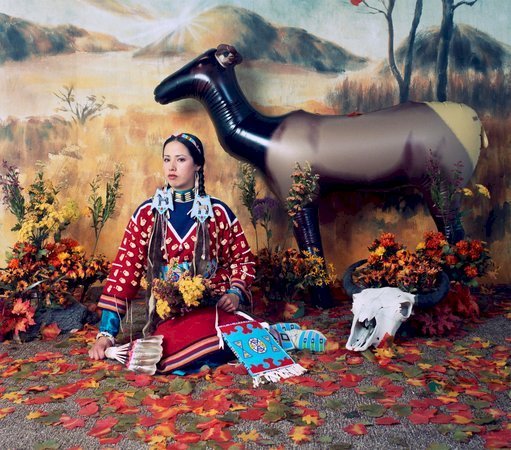
Contemporary American culture in 2025 is a vivid mix of tradition, innovation, and reinvention—shaped by rapid technological change, evolving social movements, and the nation’s unmatched cultural diversity. It’s not just something studied in books; it shows up in everyday life. You can see it in the rise of TikTok micro-trends that go viral overnight, the dominance of streaming platforms shaping entertainment, the surge of fusion foods and plant-based dining, and the bold shifts in fashion and self-expression. Even conversations around politics, identity, and community now unfold across digital spaces just as much as they do in classrooms, workplaces, or public gatherings.
In essence, culture today is woven into how Americans connect, create, and express themselves—whether that’s at a music festival, in a Zoom meeting, or while scrolling through social media.
➤ In this article, we’ll dive deep into what makes contemporary American culture in 2025 so unique, highlighting the key forces driving change and the traditions that continue to anchor it.
Technology’s Influence on Modern American Culture

Image source: in2english.net
In today’s United States, technology is more than a convenience—it’s a cultural engine. From the way people dress to the way they vote, digital tools shape everyday choices and collective experiences.
Social Media as a Cultural Mirror
Platforms like TikTok, Instagram, and YouTube act as cultural mirrors, reflecting and amplifying trends. A song can go viral overnight, turning unknown artists into chart-toppers, while fashion brands ride the wave of influencer-driven content. According to the Pew Research Center (2024), nearly three-quarters of U.S. adults use social media regularly, with the highest usage among younger generations. For Gen Z and Millennials, these platforms aren’t just entertainment—they’re places to express identity, join movements, and find community.
The Rise of AI and Virtual Worlds

Image source: anspachmedia.com
By 2025, artificial intelligence and virtual reality are no longer futuristic concepts—they’re part of mainstream culture. Virtual reality headsets now make it possible to attend concerts, art exhibits, and even political rallies without leaving home. At the same time, AI-generated music, film scripts, and visual art are flooding digital spaces, sparking discussions about creativity, originality, and what it means to be “human” in art.
Streaming services like Netflix, Disney+, and YouTube remain dominant cultural hubs. The shows and creators that thrive on these platforms often dictate the conversations happening around dinner tables, in classrooms, and across online communities.
If you’re planning a get-together with loved ones, our Ultimate Guide to Fun Family Reunion Activities That Bring Everyone Together offers creative ideas to make the event unforgettable.
Balancing Innovation and Well-Being

Image source: img.freepik.com
Yet, this digital culture comes with tension. Privacy concerns, misinformation, and the mental health effects of constant connectivity are frequent topics of debate. The ease with which misinformation spreads on social media has altered how Americans think about trust in media, while heavy screen use has been linked to issues like anxiety and reduced attention spans.
In response, many Americans are searching for balance. Digital detox challenges, mindfulness apps, and limits on screen time are becoming common strategies. Schools and workplaces are also rethinking how to use technology in ways that empower rather than overwhelm.
A Defining Force of the 21st Century
Technology in contemporary American culture is both connective and disruptive. It builds communities, amplifies creative voices, and democratizes access to entertainment and information. At the same time, it forces society to wrestle with questions of ethics, well-being, and truth. How the U.S. navigates this balance in the years ahead will determine not just cultural trends, but the very shape of American identity in the digital age.
Diversity as the Heart of American Identity

Image source: i.pinimg.com
America’s greatest strength has always been its diversity, and in 2025 that richness is more visible than ever. Communities from across the globe have helped shape the nation’s cultural fabric, influencing how Americans eat, celebrate, create, and connect with one another. From the bold flavors of Latin American cuisine to the timeless rhythms of African American music, from Asian traditions that bring people together to Middle Eastern fashion reshaping style, cultural exchange continues to define daily life in the U.S.
Multiculturalism is deeply woven into the nation’s identity. The U.S. has long been described as a melting pot, but today it resembles more of a vibrant mosaic—one where distinct traditions coexist while enriching the whole. Each generation adds new layers to the American story, making it more inclusive, dynamic, and representative of global heritage.
Festivals and cultural events showcase this richness: Lunar New Year parades fill streets with lion dances and lanterns, Diwali celebrations brighten communities with lights and music, Juneteenth honors freedom and resilience, and Hispanic Heritage Month highlights lasting contributions from Latino communities. These events are not only cultural showcases—they are living reminders of America’s values of resilience, creativity, and unity.
Diversity in America is not just about coexistence; it is about enrichment and innovation. It inspires new ideas in art, technology, cuisine, and business while keeping the nation’s identity fresh and forward-looking. More than a single thread, America is a tapestry woven from countless voices, traditions, and dreams, each one essential to the larger story of who we are.
Read: If you’re a music lover looking to dive deeper into festival culture, don’t miss our complete guide to the North Coast Music Festival 2025: Lineup, Schedule & Insider Tips for everything you need to plan your experience.
Music and Pop Culture Trends
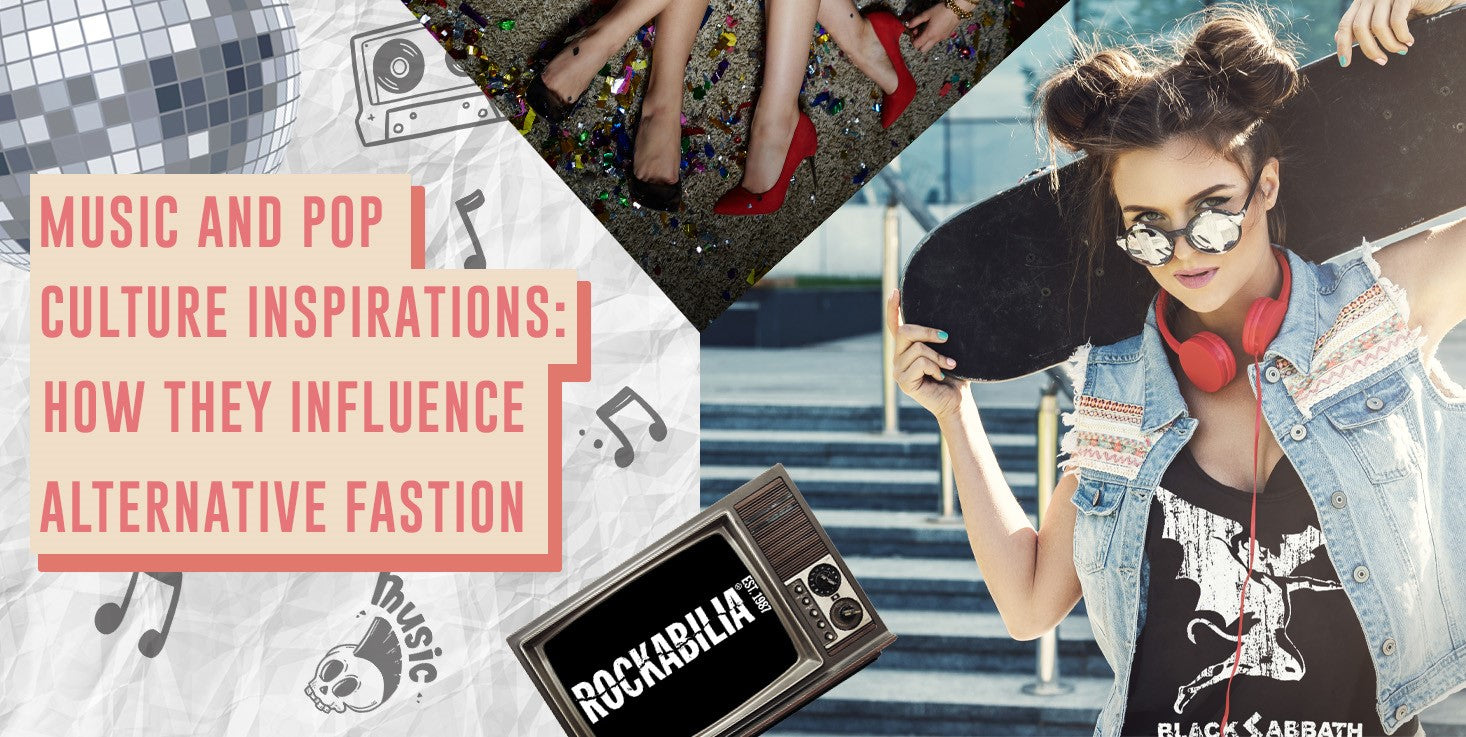
Image source: rockabilia.com
Music remains one of the most influential cultural forces in America. In 2025, hip-hop, rap, pop, and country continue to dominate, but genre lines are becoming increasingly fluid. Global sounds such as K-pop, Afrobeats, and reggaeton are seamlessly blending into mainstream hits, reflecting a cultural exchange where American music inspires the world while also being reshaped by international trends. High-profile collaborations between U.S. stars and global artists highlight how interconnected the industry has become.
Streaming platforms like Spotify, Apple Music, and YouTube are now the primary way people consume music, making digital access central to the industry’s growth. Social media, especially TikTok, has transformed the path to stardom—short viral clips often propel songs from obscurity to the top of the charts within weeks. These viral moments don’t just impact music; they also spark fashion crazes, influence slang, and inspire dance trends, reinforcing music’s role as a driver of pop culture.
Ultimately, music in 2025 is not just entertainment—it’s a cultural engine. By fusing local traditions with global sounds and thriving in a digital-first world, it continues to shape how people express identity, creativity, and belonging.
Film, Television, and Streaming Platforms

Image source: i.pinimg.com
By 2025, streaming platforms dominate American entertainment, with most households subscribing to multiple services. Netflix, Disney+, Hulu, and Amazon Prime Video remain industry leaders, but the competition has expanded. YouTube and TikTok have transformed from social platforms into entertainment powerhouses, where creator-driven content challenges the traditional Hollywood model and attracts massive audiences.
Representation has taken a meaningful step forward. Diverse casts and stories centered on immigrant, Black, Asian American, Latino, and LGBTQ+ experiences are not only more visible but also celebrated in mainstream film and television. Limited series and documentaries often serve as cultural flashpoints, sparking public conversations about politics, family, identity, and social change.
Hollywood continues to produce blockbuster films and prestige television, yet the line between professional productions and independent or creator-led projects is increasingly blurred. Today, a web series filmed on a modest budget can sit alongside major studio productions in cultural influence, thanks to digital distribution.
In this evolving landscape, film and television function as cultural mirrors—reflecting societal debates while shaping the way Americans understand community, identity, and belonging.
Also Check: Wellness has become a cultural priority in the U.S., and events like National Wellness Month highlight the importance of balance, mindfulness, and healthy living in everyday life.
Food and Culinary Fusion
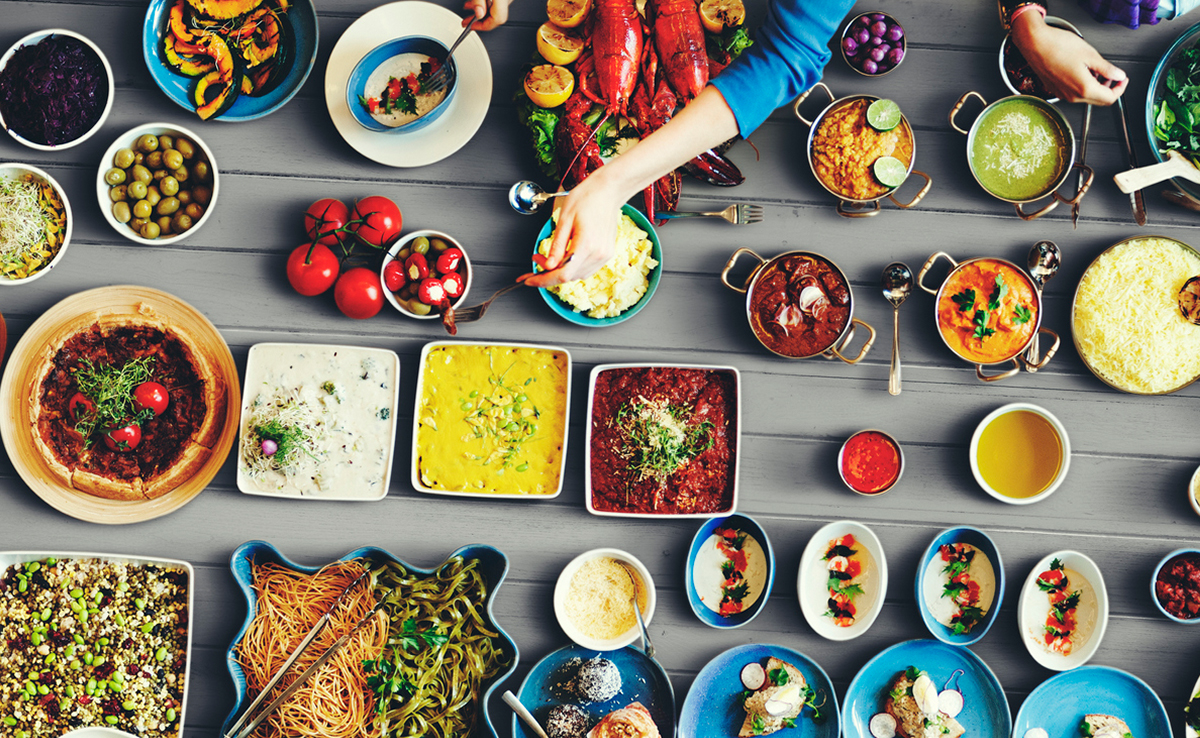
Image source: c.ndtvimg.com
Food is one of the clearest reflections of cultural identity, and in 2025, the American dining scene is more diverse than ever. On any given day, people might enjoy Mexican tacos, Japanese ramen, Middle Eastern falafel, or Southern barbecue—often alongside modern favorites like plant-based burgers, oat milk lattes, and gluten-free pastries. This mix highlights how global traditions and health-conscious choices are reshaping what it means to eat “American.”
The demand for fresh, organic, and locally sourced food continues to grow, fueling the popularity of farm-to-table restaurants and farmer’s markets across major cities. At the same time, fast-food giants such as McDonald’s and Burger King have expanded their menus to include plant-based proteins and are experimenting with lab-grown meat to meet the tastes and values of younger consumers.
Convenience remains a major factor in dining, with food delivery apps becoming a staple in urban areas. For many, ordering meals is as routine as grocery shopping, transforming how restaurants operate and how people experience food. Meanwhile, social media plays a huge role in shaping food trends—viral TikTok cooking hacks, creative Instagram-worthy brunches, and even themed “food challenges” link dining to identity, lifestyle, and entertainment.
Together, these shifts show how food in America is no longer just about nourishment. It is a cultural stage where global flavors, sustainability, technology, and social media intersect—making the culinary world one of the most dynamic reflections of modern life.
Sports and National Identity

Image source: i.pinimg.com
Sports remain one of the most unifying forces in American culture, bridging divides of age, geography, and background. Football, basketball, and baseball continue to dominate the national stage, yet soccer’s popularity is steadily rising—boosted by international leagues, a growing fan base for Major League Soccer (MLS), and the United States’ role as host for major global tournaments. A recent milestone underscored this passion: the 2024 Super Bowl attracted more than 123 million viewers, making it the most-watched broadcast in U.S. television history (Nielsen).
Athletes today are more than competitors—they are cultural icons. Figures like LeBron James, Serena Williams, and Patrick Mahomes have used their platforms to spotlight issues such as racial justice, gender equality, and climate change. Their influence extends far beyond the playing field, shaping conversations in politics, education, and entertainment.
At the same time, esports have cemented their place in mainstream culture, with millions of Americans tuning in to watch competitive gaming on platforms like Twitch and YouTube. Professional esports events now fill arenas, and colleges across the U.S. are offering scholarships to talented players, reflecting how digital competition has joined traditional athletics in shaping national identity.
In 2025, sports represent far more than wins and losses—they embody pride, activism, and a shared sense of belonging. Whether through a touchdown on Sunday night, a World Cup match, or a livestreamed gaming tournament, sports continue to be a powerful lens through which Americans express unity and cultural identity.
Political and Social Movements

Image source: i.pinimg.com
In 2025, politics remain deeply intertwined with cultural identity in the United States. National debates around climate change, healthcare, racial justice, and gender equality continue to dominate public life, shaping not only government policies but also everyday cultural conversations. The ongoing sense of division is reflected in language itself—Merriam-Webster named polarization the Word of the Year for 2024, underscoring how political and social divides define the era.
Legacy movements such as Black Lives Matter and #MeToo remain influential, continuing to spark dialogue about systemic inequality and accountability. At the same time, a new wave of youth-led activism is gaining traction. Groups led by Gen Z and Millennials are particularly focused on climate action, gun safety reform, and student debt relief, often using grassroots digital campaigns to mobilize support.
According to research from the Pew Research Center (2024), younger generations are the most politically active online, leveraging platforms like TikTok, Instagram, and X (formerly Twitter) to amplify causes, share resources, and organize real-world protests. This digital activism blurs the line between politics and pop culture—memes, viral videos, and satirical content spread as widely as policy debates, turning political participation into a cultural experience as much as a civic one.
In this way, political and social movements in 2025 are not just shaping government priorities—they are embedded in how Americans express values, form communities, and define cultural identity.
Read More: If you’re planning holiday trips this winter, don’t miss our full guide on Celebration in Lights Newport News: Virginia’s Oldest Drive-Through Holiday Light Show
Education and Cultural Awareness

Image source: cms-tc.pbskids.org
Schools and universities in the U.S. shape more than academic knowledge—they help define identity, values, and social understanding. In 2025, classrooms are placing stronger emphasis on diversity, inclusivity, and digital learning, ensuring students are better prepared for a multicultural and interconnected world.
History and social studies curricula increasingly highlight the contributions and struggles of groups that were once marginalized or overlooked, including women, Indigenous peoples, immigrants, and African Americans. This broader approach fosters cultural awareness and encourages critical thinking about the nation’s past and its future.
Beyond academics, colleges and universities serve as hubs of cultural exchange. Many campuses host cultural festivals, art exhibitions, film screenings, and student-led initiatives that focus on equity, identity, and belonging. These events not only celebrate heritage but also create dialogue that deepens understanding across communities.
Digital technology also plays a transformative role. Online learning platforms and hybrid classrooms extend access to education, connecting American institutions to students worldwide. At the same time, international students continue to enrich U.S. campuses by sharing their own languages, customs, and traditions, creating an environment where global perspectives thrive alongside American values.
Education in the United States, therefore, goes beyond transmitting knowledge—it also instills values, nurtures civic responsibility, and fosters cultural exchange. This makes it one of the most influential forces shaping contemporary American culture in 2025.
Fashion and Streetwear in 2025

Image source: therake.com
Fashion continues to be one of the boldest forms of cultural expression in the U.S. In 2025, American style is defined by a mix of streetwear, thrifted finds, and high-end luxury pieces. What was once niche is now mainstream—secondhand shopping has exploded in popularity, especially among Gen Z, where thrifted fashion is valued for both affordability and sustainability (ThredUp Resale Report 2024).
Social media is accelerating the trend cycle more than ever. Platforms like TikTok, Instagram, and Pinterest can take a micro-trend from viral video to retail shelves in just weeks. This speed has made fashion more dynamic but also more fleeting, with consumers constantly seeking the next big look.
In terms of style, Cowboycore—inspired in part by Beyoncé’s 2024 country-inspired album—has influenced boots, hats, and denim-heavy aesthetics across mainstream fashion. Hip-hop and streetwear culture also remain dominant, with oversized fits, graphic designs, and sneaker culture continuing to shape everyday wear. Alongside these, identity-driven fashion—such as gender-fluid collections and cultural heritage pieces—is gaining recognition as individuals use clothing to express values and belonging.
At the same time, sustainability is no longer just a buzzword; it’s a priority. From upcycled materials to rental fashion and slow-fashion brands, consumers are actively seeking ways to align their style choices with environmental responsibility.
Overall, fashion in 2025 is more than clothing—it’s a reflection of creativity, identity, and cultural values, making it one of the most visible and evolving parts of American culture today.
Religion and Spirituality Today
Image source: encrypted-tbn0.gstatic.com
Religion continues to shape American culture, but the way people approach faith and spirituality is evolving. A 2024 Pew Research Center study found that more than a quarter of U.S. adults—about 28%—now identify as religiously unaffiliated. Many of these individuals describe themselves as “spiritual but not religious,” signaling a shift toward personal belief systems over institutional affiliation.
Christianity remains the largest faith tradition in the United States, but other religions—including Islam, Hinduism, Judaism, and Buddhism—are becoming more visible in public life. Interfaith events and celebrations such as Eid, Diwali, and Passover are increasingly recognized beyond their traditional communities, with schools, workplaces, and civic organizations often hosting or acknowledging them.
This shift illustrates how American spirituality is balancing continuity with change. Longstanding religious traditions continue to provide meaning for millions, while newer expressions of faith, personal spirituality, and interfaith exchange reflect the country’s diversity and emphasis on individual freedom.
Check: For a deeper look at how new ideas, lifestyles, and artistic expressions are influencing society, check out our guide on Emerging Cultural Movements of 2025: Trends Shaping the Year Ahead
Work Culture and Lifestyle

Image source: uyc.thecenterforsalesstrategy.com
Work in 2025 is shaped by both ambition and the pursuit of balance. Remote and hybrid roles remain widespread, giving employees more choice in how and where they work. Flexible schedules, mental health benefits, and wellness initiatives are no longer perks but standard expectations in many industries. This reflects a cultural shift where professional success is measured not only by career advancement but also by overall well-being.
Freelancing and entrepreneurship continue to grow, fueled by digital platforms that make it easier than ever to launch side hustles or independent businesses. From content creation to e-commerce to consulting, millions of Americans are embracing nontraditional career paths. For many, these ventures provide both supplemental income and a sense of autonomy.
Importantly, ambition has not disappeared—it has been redefined. Success is increasingly viewed in personal terms, whether that means climbing the corporate ladder, building a flexible freelance career, or prioritizing time for family and passions. The modern workplace reflects a diverse and evolving culture—one that values productivity, but also recognizes the importance of individuality, freedom, and balance.
Health, Fitness, and Wellness

Image source: i.pinimg.com
In 2025, health and wellness have moved from being personal goals to shared cultural values. Technology plays a central role—millions of Americans now rely on fitness apps and wearable devices to track steps, heart rate, sleep, and overall health. This digital approach has made wellness more accessible, data-driven, and customizable to individual lifestyles.
Mind-body practices like yoga, meditation, and mindfulness have fully entered the mainstream. No longer confined to gyms or yoga studios, they are increasingly being integrated into schools, workplaces, and even healthcare programs as proven methods for stress management and mental clarity.
Food and nutrition trends also reflect this holistic approach. Plant-based eating, sustainable farming, and organic produce are in high demand, driven both by health-conscious consumers and a growing awareness of environmental impact. Meanwhile, personalized nutrition plans, often guided by health tech or professional dietitians, are gaining popularity as people seek diets tailored to their unique needs.
Mental health has also taken center stage. Therapy, counseling, and digital wellness platforms are more widely used and accepted, helping reduce stigma and encouraging open conversations around anxiety, depression, and stress. Many employers now include mental health benefits and wellness initiatives as part of their workplace culture, recognizing the link between well-being and productivity.
Together, these trends illustrate how wellness in 2025 goes beyond physical fitness—it’s about balance, sustainability, and mental resilience. The emphasis on holistic well-being shows that caring for both body and mind is no longer optional, but an essential part of American cultural life.
Pop-Cultural Symbols and American Icons

Image source: www.billboard.com
In 2025, American cultural identity is expressed through a mix of timeless symbols and modern figures. Traditional icons such as the U.S. flag, Hollywood, and the Super Bowl continue to hold enormous cultural weight, representing national pride, entertainment, and collective celebration. At the same time, contemporary stars like Taylor Swift and Beyoncé extend their influence far beyond music—shaping fashion trends, sparking political conversations, and redefining what it means to be a cultural leader.
Social media has amplified this evolution. Platforms like TikTok, Instagram, and YouTube turn influencers and creators into cultural icons almost overnight. They coin new slang, launch viral memes, and introduce trends that spread across generations in real time. What once took years to embed in culture can now become mainstream in a matter of days.
Athletes, actors, and musicians are also using their platforms to speak out on issues such as racial equality, voting rights, and climate change. Their advocacy reflects a shift in what defines an American icon: not only talent or success, but also the ability to engage with pressing social issues.
This blending of traditional symbols with digital-age figures shows how U.S. culture bridges generations. It honors long-standing icons while remaining adaptable, fresh, and relevant to a fast-changing world.
Also Read: For a deeper dive into how music, fashion, and viral social media moments are shaping identity and entertainment, check out our guide on American Pop Culture 2025: Trends, Music, Fashion & Viral Moments
Global Influence of American Culture

Image source: i.pinimg.com
American culture remains one of the most recognizable and far-reaching forces in the world. Hollywood films, Netflix series, and iconic brands like Apple, Nike, and Coca-Cola continue to shape consumer lifestyles, fashion, and entertainment across continents. From blockbuster superhero movies dominating international box offices to fast-food chains setting global dining trends, U.S. cultural exports remain deeply embedded in everyday life abroad.
At the same time, the exchange is no longer one-sided. Global influences are increasingly shaping American tastes. K-pop has built a massive following in the U.S., anime and manga have become mainstream entertainment, and Latin music—from reggaeton to bachata—regularly tops American charts. These shifts reflect a growing openness among U.S. audiences to embrace diverse forms of art, entertainment, and identity.
This two-way flow of culture demonstrates how globalization has created a constantly evolving ecosystem. The U.S. continues to export its creative power, but it also absorbs international trends that reshape its own cultural landscape. The result is a dynamic cultural dialogue that keeps both American and global popular culture fresh, relevant, and interconnected.
U.S. Streaming Trends in 2025

Image source: i.pinimg.com
Streaming continues to dominate American entertainment habits, reshaping how people watch television and consume content. The following highlights capture the current landscape:
|
Metric |
Value |
|
Share of total TV viewing (streaming) |
38% of overall TV time (Nielsen, 2024) |
|
Average daily time spent streaming |
3 hours, 6 minutes (ExplodingTopics, 2024) |
|
Leading platforms by market share |
Netflix & Prime Video (~22% each), Disney+ (11%), Hulu (10%) (Statista, 2024) |
What This Means
- Streaming over traditional TV: With nearly 4 out of every 10 minutes of TV viewing happening on streaming services, the shift away from cable and broadcast TV is unmistakable.
- Time commitment: Over three hours of daily streaming shows that platforms like Netflix, Prime Video, and Disney+ are not just alternatives but the primary way many Americans watch video content.
- Platform competition: While Netflix and Prime Video remain leaders with roughly equal market share, Disney+ and Hulu still hold significant slices of the market. This reflects a highly competitive landscape where new content releases and exclusive deals can quickly sway audience loyalty.
Streaming in 2025 is not just about watching shows—it has become a cultural driver that influences how people spend their leisure time, discover trends, and engage in shared viewing experiences.
Read: Looking for more ways to strengthen family bonds? Check out our guide on Fun Activities for Family (2025): Indoor, Outdoor & Budget-Friendly Ideas That Actually Work for creative and affordable inspiration.
Conclusion
Contemporary American culture in 2025 is a dynamic fusion of diversity, technology, politics, entertainment, and lifestyle influences that shape daily life. It thrives on a balance between tradition and innovation—honoring timeless values while embracing global trends and digital creativity.
From TikTok challenges and Netflix originals to evolving food cultures, fashion statements, and grassroots activism, American culture is both deeply local and unmistakably global. It adapts quickly to social changes and technological shifts, making it a constant source of reinvention.
What stands out most is its dual role: culture serves as a unifying force within the U.S., bringing communities together through shared experiences, while also projecting American creativity, ideas, and values onto the global stage. In this way, contemporary American culture is not static—it is an ever-evolving story of connection, innovation, and influence.
FAQs on Contemporary American Culture
Q: What does contemporary American culture mean?
A: Contemporary American culture refers to the traditions, values, and lifestyle trends that shape how Americans live today. It includes everything from technology use and entertainment choices to social movements, diversity, and evolving ideas about identity and community.
Q: How has diversity shaped contemporary American culture?
A: Diversity is at the heart of modern American life. Immigration, multicultural communities, and cross-cultural exchanges have introduced new foods, music genres, art styles, and traditions. This blending of cultures makes the U.S. one of the world’s most dynamic and multicultural societies.
Q: What role does pop culture play in contemporary American culture?
A: Pop culture—driven by platforms like TikTok, Instagram, and streaming services—has a major impact on language, fashion, music, film, and sports. It not only entertains but also influences social values, political conversations, and the way people express identity.
Q: Is technology part of contemporary American culture?
A: Absolutely. Social media, artificial intelligence, digital streaming, and gaming are deeply woven into everyday life. Technology shapes how people connect, consume entertainment, work, and even form communities, making it a central part of cultural expression in the U.S.
Q: Why is contemporary American culture important?
A: It matters because it reflects how Americans think, live, and interact in the present. At the same time, it shapes global trends—whether in music, technology, or lifestyle—cementing the U.S. as a key influence in worldwide culture.

 Selina Smith
Selina Smith 

